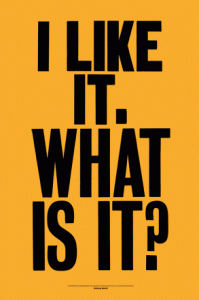 This could be the year of Peter Drew.
This could be the year of Peter Drew.
Most Adelaideans don’t know the name but chances are they’ve seen his work all over the city, from the huge posters of criminal mug shots to the Icarus motif atop a prominent city building, his personal favourite.
Peter has just opened his final solo exhibition at A P Bond Gallery in Stepney and in less than a week he’ll take part in the opening of South Australia Illustrated: From the Street at the Art Gallery of South Australia.
It’s not every street artist who finds their anti- institutional s scrawls hanging in the State’s premiere arts institution, but in keeping with the rebellious overtones of graffiti, this won’t be any regular exhibition.
There’s a twist.
<
Peter has donned his curatorial hat and invited 12 fellow artists to `respond’ to an unfinished portrait of Adelaide’s founder, Colonel William Light, which he will turn frame in heavy antique frames ready for the Gallery walls.
They’ll be there, beautifully lined up when the exhibition opens, but throughout the exhibition Peter will take a portrait and hang it someplace around Adelaide.
He’ll give clues on its location using social media, such as his Facebook page.
“It is really great that the Art Gallery has agreed to this – it turns the whole exhibition on its head,” said the softly spoken artist.
But it will be nicked, won’t it? And that is the whole point.
”It’s an experiment in opportunism,” said Peter.
“The idea of theft and opportunism – that impulse hasn’t changed since colonial times. If there’s something there and people think that they can get away with taking it, they will. There is definitely a link between colonialism and opportunism.”
Even exhibiting at the `big end’ of the city, as the Gallery and its North Terrace cultural neighbours are known, can’t curb the edge of a street artist.
Around town though, Peter – an Adelaide born and educated visual artist and writer – is best known for his uncommissioned art for the urban landscape – or street art – which can be found not only on home turf but around Berlin, Glasgow and London.
Criminal Element
Peter says that having made illegal street art for years without being caught, he started to forget that it was a crime.
“When I was finally arrested I began to think more seriously about its criminality. This interest grew into a side project, which quickly blew out into the largest street art campaign I’ve undertaken.”
Adelaide’s Forgotten Outlaws grew from Peter searching police documents at the South Australian State Records. Drawn to photos from the early 1920s, he began choosing mug shots based mostly on the immediate impact of the image.
“Whether through their defiant pride, amused irreverence or shamed humiliation – some faces drew me in,” said Peter.
And so began his self-funded, ‘uncommissioned’ public project. Peter pasted some 42 black and white posters, each standing 2.5 meters, on naked city walls and sides of buildings.
Initially he worked at night, rather like the criminals he iconised, but soon realized it would be safer during the day dressed as a legitimate worker.
“When I donned the high vis vest and went about my business I didn’t feel like a criminal, I felt as thought I was performing a public good,” he said.
Unstoppable
While the man of the street has generally enjoyed Peter’s campaign, Adelaide City Council eventually traced the posters back to him and struck a deal.
The Council would stop removing the work so long as Peter legitimised the project through a ’pilot project’ scheme and removed the criminals’ surnames to protect surviving relatives.
Peter said he was just happy that people got to see the posters, as he’d intended. So impressed with his work were the folks at History SA that they let Peter loose on their photo archive.
He chose 10 portraits of everyday, extraordinary South Australians from the 1870s to the 1930s for use as part of the About Time: South Australian History Festival, which ran through May 2012.
Come August, Peter is heading abroad to study writing criticism at the Glasgow School of Art for a year or two. He wants to write a book, not surprisingly, about street art – comparing it to other artistic movements throughout history that were viewed as anti-institutional.
And while he’s away, he says he may have the urge to express himself artistically on a blank wall.
“I’m not sure that I can stop,” said Peter.
Peter Drew’s solo exhibition All you need is LIKE is currently running at AP Bond Gallery. South Australia Illustrated open at the Art Gallery of South Australia 1 June, 2012.
